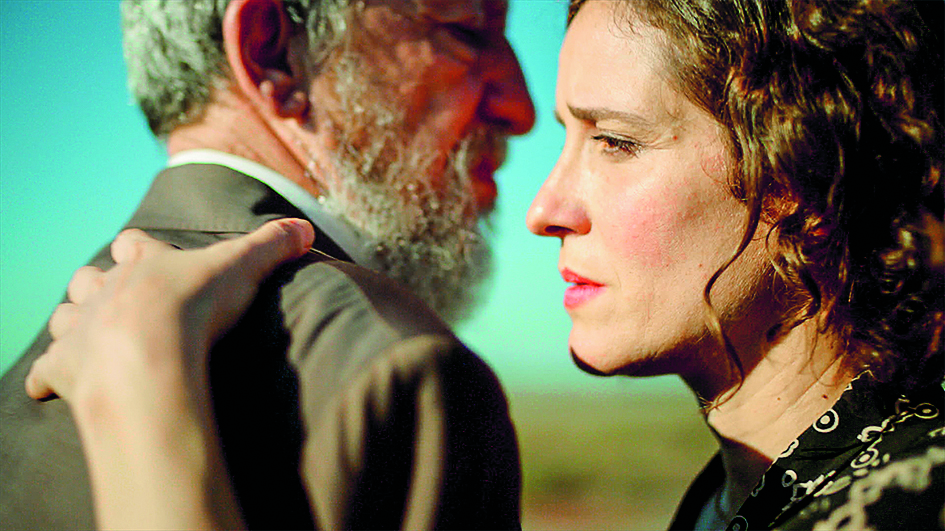The Thessaloniki of Jewish memory
Creators of the film ‘The City and the City’ and the artistic director of the Documentary Festival talk to Kathimerini

The first question I wanted to pose to Orestis Andreadakis when he spoke to me of his project “The City and the City” was how the history of Thessaloniki’s Jewish community can be linked to the bicentennial of the Greek Revolution, which is the theme of this year’s Thessaloniki Documentary Festival.
“In celebrating the 200 years since the 1821 Revolution, we must create an honest national identity by dealing with major national traumas. These traumas are our ghosts. They exist so long as we exist: the National Schism, the Asia Minor Catastrophe, the Pontic genocide, the Civil War, the dictatorship, the Cyprus tragedy, the elimination of the Greek-Jewish community of Thessaloniki. Some of these we handled bravely and some we healed, some we simply forgot, but most are still here. At the beginning we underestimated them, then we overdramatized them, then we felt wronged and finally we resigned all hope.
“This is how it went with the trauma of the elimination of the Greek Jews: We underestimated it, we hid it, we attributed its causes to other invisible enemies and to religious reasons and then we agreed that it’s none of our business. But the era when national narratives were based on myths and made-up traditions is long past, as is the era of the wrongful usage of these false narratives. This bicentennial marks the beginning of the new era, the period of ‘real trauma-management,’” says the festival’s artistic director.
The film titled “The City and the City,” created by Syllas Tzoumerkas and Christos Passalis, will be presented for the first time Thursday and Friday (starting at 9 p.m.) in the form of a three-screen installation at the Stavros Niarchos Foundation Cultural Center in southern Athens.
We were shown an excerpt for the purposes of this piece.
Why two cities? Is there a specific symbolism?
“The title is literal, there is no symbolism. Each city has, at its core, the marks of those cultures and people who inhabited it in the past. This is also the case in Thessaloniki, which has existed for centuries. In today’s city there coexist the Roman, the Byzantine, the Ottoman and the Jewish cities. As regards memory, this is carried on by the people, who either accept or reject the truths derived from the events,” says Passalis.
Events and marks. The film places people from times past in the city; we see them laugh, cry, dance, flirt and then be imprisoned and humiliated. One could say these are the ghosts of an entire community, the most populous community until the early 20th century, lost forever. The film’s creators admit this was not an easy production, but the story had to be told.
“We want to show the painful story of the events that took place in Thessaloniki in the last century. The city lost a unique opportunity to retain its multicultural character and extraversion,” says Tzoumerkas.
Passalis talks about the historical aspect of the film: “The way we structured the film is a different approach to history. It reverses many established traditions of the history genre. Above all, it is frank and open. It dares to touch the wound. It is time this horrific event became part of our collective consciousness.”
The two directors are using an experimental approach to the narrative and to the aesthetics. “In ‘The City and the City’ myth, documentary and the essay-film coexist and feed off of each other, producing dynamic results. In reality, the narration in the film follows simple and provocative rules, which can be easily understood and followed,” adds Tzoumerkas.
One could say that their approach to the film is targeted at younger audiences that have little to do with history books; however, the creators are not bound by age groups. “I certainly don’t think that an older audience necessarily has a better grasp of history. This is one of our film’s themes: our tragic relationship with history, for generations, especially when it comes to the events that shaped the Jewish community of Thessaloniki,” notes Tzoumerkas. Passalis adds, “Our historical knowledge on this matter is poor regardless of generation or age group.”
Andreadakis said this in closing: “Pre-war Thessaloniki was a model city. Not everything was perfect, of course. There were religious and political disputes. But this variety created a rich city, economically, culturally and politically. After this pandemic, I feel like we need such cities.”
Lack of remembrance
Beyond this film, the festival honors Jewish memory in its catalogue. History professor Giorgos Antoniou says: “Since 1912, when Thessaloniki was incorporated into the Greek state, the city has been moving so fast. There were 1912, 1917, 1923, 1931 and of course 1941 – years that set the peoples and communities of this city into an anxious and perpetual state of motion. Changes were radical and no one could comprehend them as they happened. Hundreds left for Athens in the first months of the occupation, fleeing to the south in the hope of escaping the Nazi threat. The city’s relative calm made them complacent, to the point that they returned to Thessaloniki a few months before the tragic events that destroyed the Jewish community.”





